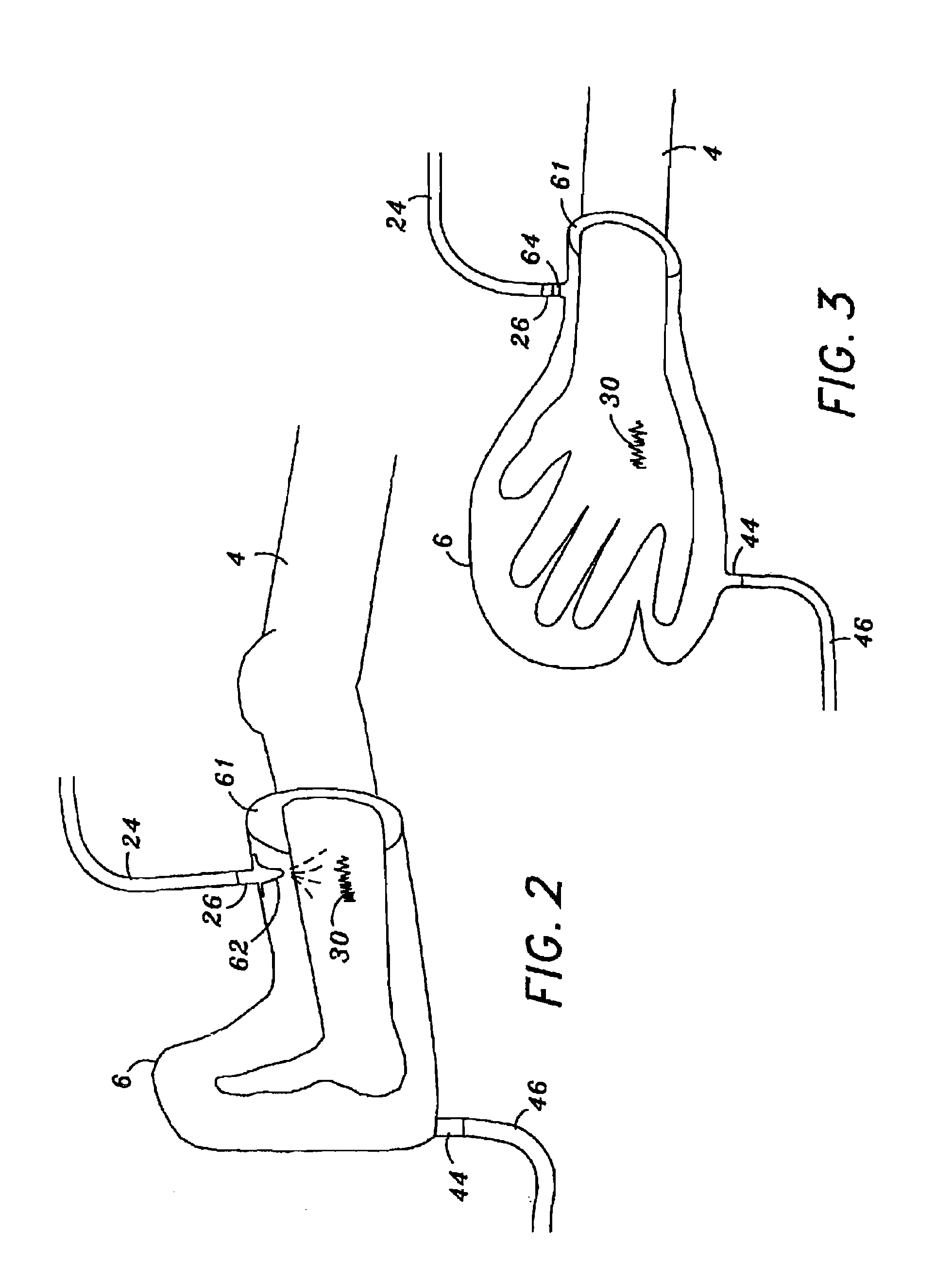Methods of Treating An Infection with Nitric Oxide
a technology of nitric oxide and nitrate, which is applied in the direction of antibacterial agents, drug compositions, antiparasitic agents, etc., can solve the problems of increasing the resistance of infectious agents, including bacteria, to conventional antibiotic therapy, and the resistance of bacteria to conventional antibiotic therapy is increasing. , the cost of agents is high, and the effect of increasing the resistance of bacteria
- Summary
- Abstract
- Description
- Claims
- Application Information
AI Technical Summary
Benefits of technology
Problems solved by technology
Method used
Image
Examples
experimental examples
Example 1
[0087]An experiment was conducted to evaluate the antimicrobial activity of nitric oxide delivered in combination with oxygen, as compared with the antimicrobial activity of nitric oxide delivered without oxygen. Full-thickness porcine wounds were infected with bacteria, and then treated with nitric oxide in combination with oxygen or with nitric oxide without oxygen. Infected wounds were treated with either 10,000 ppm nitric oxide without oxygen for 30 minutes, 10,000 ppm nitric oxide in combination with 20% oxygen for 30 minutes, or 10,000 ppm nitric oxide in combination with 20% oxygen for 120 minutes. After treatment, biopsies of infected and treated wounds, as well as of infected but untreated wounds, were taken and a bacterial population count from each biopsy was determined.
[0088]A pathogen-free, commercially-raised, female, Yorkshire-cross pig weighing about 20 to 30 kg (Real Hog Farm, Marion, Tex.) was used. Before and during therapy, the s pig was housed in a rais...
example 2
[0100]Experiments were conducted to evaluate the antimicrobial activity of nitric oxide delivered in combination with varying concentrations of oxygen. Full-thickness porcine wounds were infected with bacteria, and then treated with nitric oxide in combination with varied concentrations of oxygen. Two pigs were used. For pigs 1 and 2, infected wounds were treated with either 10,000 ppm nitric oxide in combination with 10% oxygen for 30 minutes, 10,000 ppm nitric oxide in combination with 15% oxygen for 30 minutes, or 10,000 ppm nitric oxide in combination with 20% oxygen for 30 minutes. After treatment, biopsies of infected and treated wounds, as well as of infected but untreated wounds, were taken and a bacterial population count from each biopsy was determined in duplicate.
[0101]Pathogen-free, commercially-raised, female, Yorkshire-cross pigs weighing about 20 to 30 kg (Real Hog Farm, Marion, Tex.) were used. Before and during therapy, the pigs were housed in a raised stainless st...
example 3
[0112]To generate a gas mixture containing 18,000 ppm nitric oxide and 20% oxygen, nitric oxide gas, from a source of nitric oxide gas having a concentration of 23,000 ppm, is mixed with oxygen gas, from a source of oxygen gas having a concentration of 100%, and with a dilutant gas, from a source of dilutant gas (e.g., N2) having a concentration of 100%, in the following ratio (NO:O2:dilutant): 0.7826 0.2000 0.0174.
PUM
 Login to View More
Login to View More Abstract
Description
Claims
Application Information
 Login to View More
Login to View More - R&D Engineer
- R&D Manager
- IP Professional
- Industry Leading Data Capabilities
- Powerful AI technology
- Patent DNA Extraction
Browse by: Latest US Patents, China's latest patents, Technical Efficacy Thesaurus, Application Domain, Technology Topic, Popular Technical Reports.
© 2024 PatSnap. All rights reserved.Legal|Privacy policy|Modern Slavery Act Transparency Statement|Sitemap|About US| Contact US: help@patsnap.com










